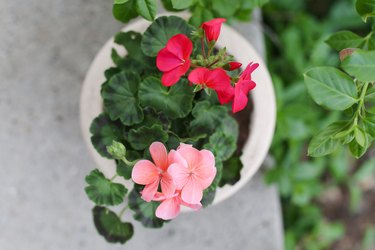
The geranium (Pelargonium spp.) is a garden mainstay that produces masses of colorful, showy flowers for most of the growing season. Most types grow as annuals in all parts of the United States, but you needn't say goodbye to your geraniums at season's end. With just a bit of effort and some care, you can over-winter garden geraniums and bring them back outdoors the next spring for a new round of flowers.
Winter Houseplants
Video of the Day

If winter temperatures fall below freezing where you live, over-winter a geranium indoors as a houseplant, bringing it back outside in the spring. Before frost arrives, choose some healthy plants, checking each for pests or signs of disease. Cut them back to about half their original size with sharp shears you wipe with rubbing alcohol between cuts to prevent spreading disease. Dig up the plants, remove dead leaves and pot each one with commercial potting soil into containers with drainage holes, watering each pot well. Keep geraniums in a sunny indoor location, such as a sunroom or on a west- or south-facing windowsill, or use fluorescent grow lights if you don't have a sunny spot. The plants need cool temperatures -- 65 to 70 degrees Fahrenheit during the day and 55 degrees at night -- and water whenever soil feels dry to the touch.
Video of the Day
Dormant Storage
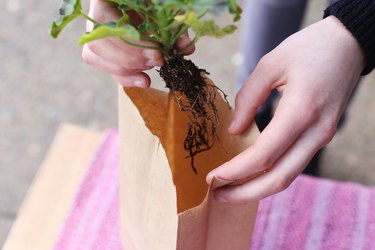
Because geraniums have thick, nearly succulent stems, they can survive dryness when kept properly during winter. To store dormant plants, dig them up in the fall, shake soil off the roots, and place plants into open paper bags. (You can also tie groups of soil-less plants together with twine and hang them upside down.) In either case, store plants in a cool, dark indoor spot, such as a basement where temperatures generally stay between 45 and 50 degrees. F. During the winter, lower the hanging plants or remove them from the bags for inspection, discarding any with soft, rotting or shriveled stems. Soak the roots of the healthy plants in water for two hours, and repeat once or twice until early spring, when you can re-pot the plants, water them well and move them into a sunny indoor spot.
Plants from Cuttings
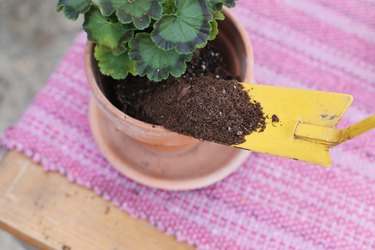
Another option is to take cuttings from garden geraniums instead of over-wintering whole plants. This lets you increase the number of plants for spring planting because you can easily make many young plants from a single geranium. Choose nonblooming branches and cut about 5 inches from the end of each branch, called tip-cutting. Remove any leaves on the lower part of the cutting and dip its end into powdered rooting hormone; avoid contaminating the supply by pouring some into a separate container. Put cuttings into moist, loose potting soil in a bright, indirectly lit spot. After four weeks, check for roots by gently tugging on the cuttings and, when rooted, move cuttings into individual pots. Keep them in a cool, sunny spot until spring, watering regularly.
Spring Move
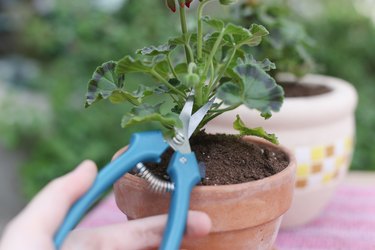
If you've over-wintered geraniums as actively growing plants, move them into the garden when frost-danger is passed and air temperature stays above about 60 degrees F. For dormant plants, pot these up in early spring and keep them indoors, watering regularly, until weather warms. These might take a few weeks to begin growing and may need cutting back to tidy them or to remove any stems that fail to grow.
In Warm Areas
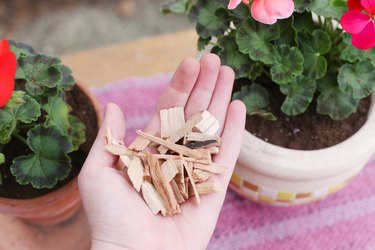
Some geraniums such as the zonal geranium (Pelargonium x horturum) are perennials in U.S. Department of Agriculture plant hardiness zones 10 through 11, where winter temperatures usually stay above freezing. If you live in one of these areas, you can leave geraniums in the ground during winter, reducing watering as their growth slows. Add 3 or 4 inches of mulch such as straw or shredded bark under each plant, piling it loosely around the plant's base; this helps keep roots warm. In the spring, remove mulch when weather warms and keep the soil evenly moist to boost new growth.